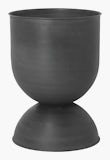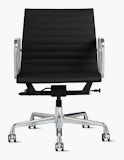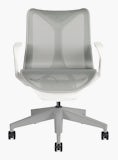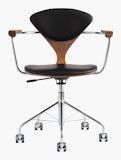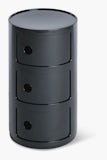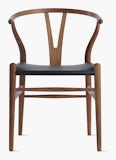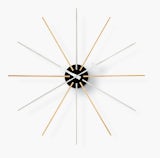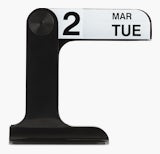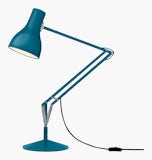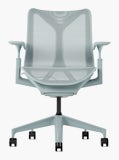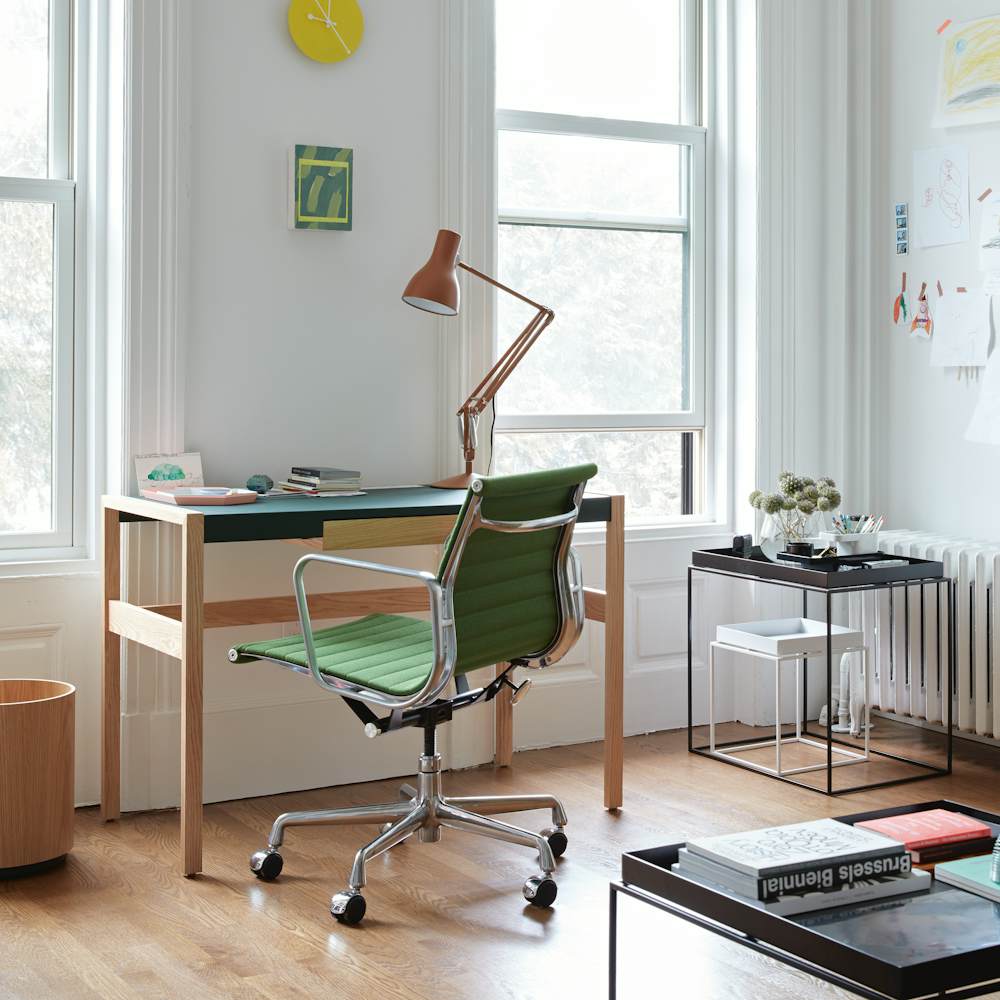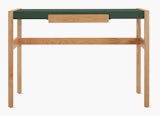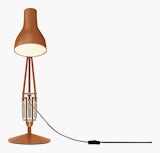How to choose a home office desk
As home offices have become increasingly ubiquitous, so has the necessity for home work desks. Whether you work from home full- or part-time, a well-equipped office is one of the primary keys to productivity. The first step to furnishing your at-home workspace is choosing a desk. It will set the tone for the room – and once you’ve decided what size the desk will be, you’ll know how much space remains for additional storage and seating. However, choosing a desk can be a daunting task, so we’ve done some of the legwork to lighten your load. Take a deep dive into types of desks, home office arrangements, organizational accessories, and more.
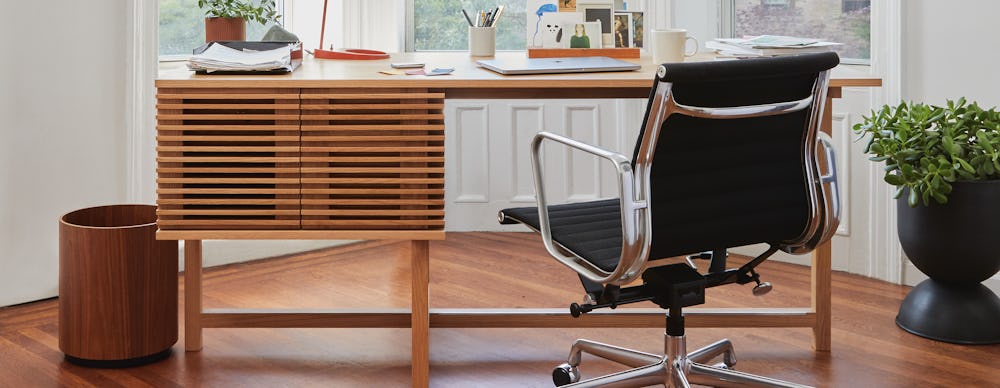
“Designing a home office starts with a single, important step: choosing a desk. Everything else will flow naturally from there – including creativity and productivity.” – Gabriela, Design Expert, DWR Houston Store
How to choose a home office desk by type
First things first: Measure your home office (don’t forget to account for windows and doors) to determine what size desk the room or area can accommodate. Then, within that framework, consider the amount of surface space you need. These measurements will help guide you through the different types of desks. As you browse, consider the following popular home office desk styles.
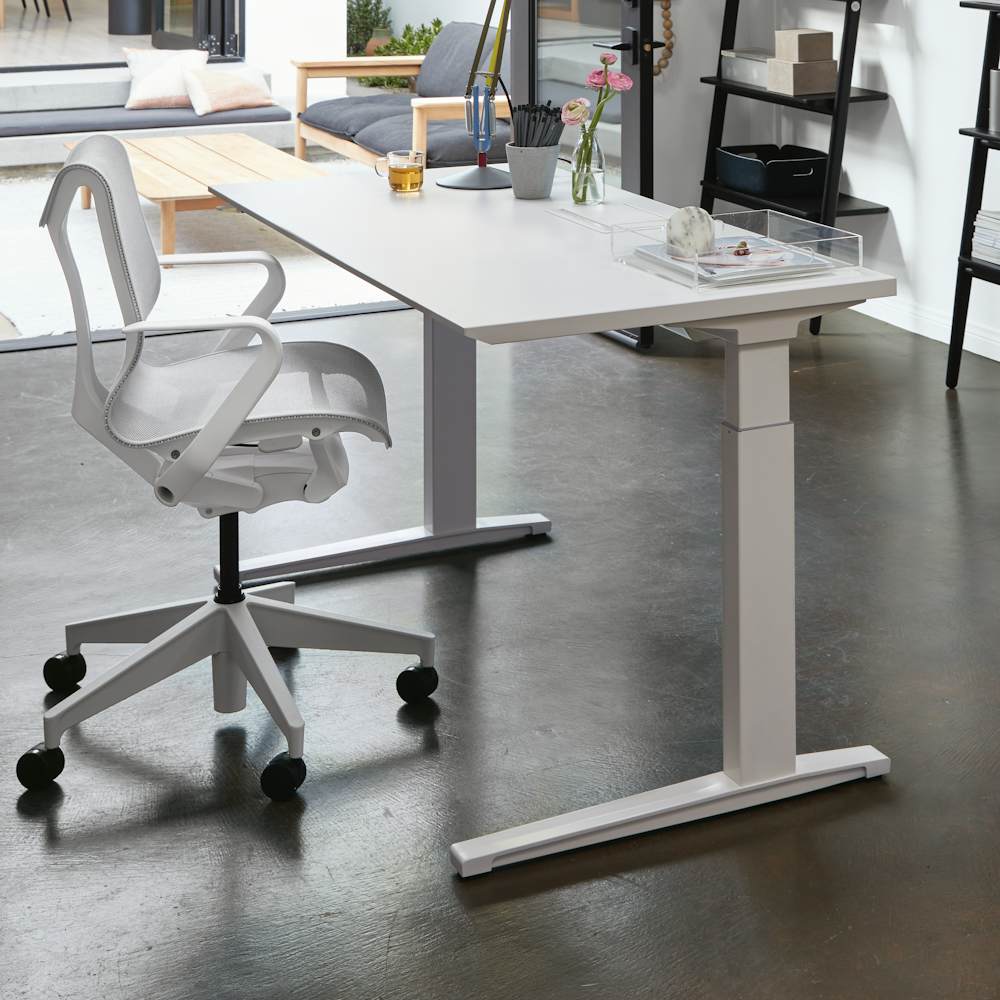
Sit-to-Stand desk
A home office standing desk can help minimize health risks associated with prolonged periods of sitting. This type allows you to adjust the height of the desk to accommodate various positions – whether you choose to sit on a traditional desk chair, perch on a stool, or stand. Most models are equipped with a motorized lift, but some are manual.
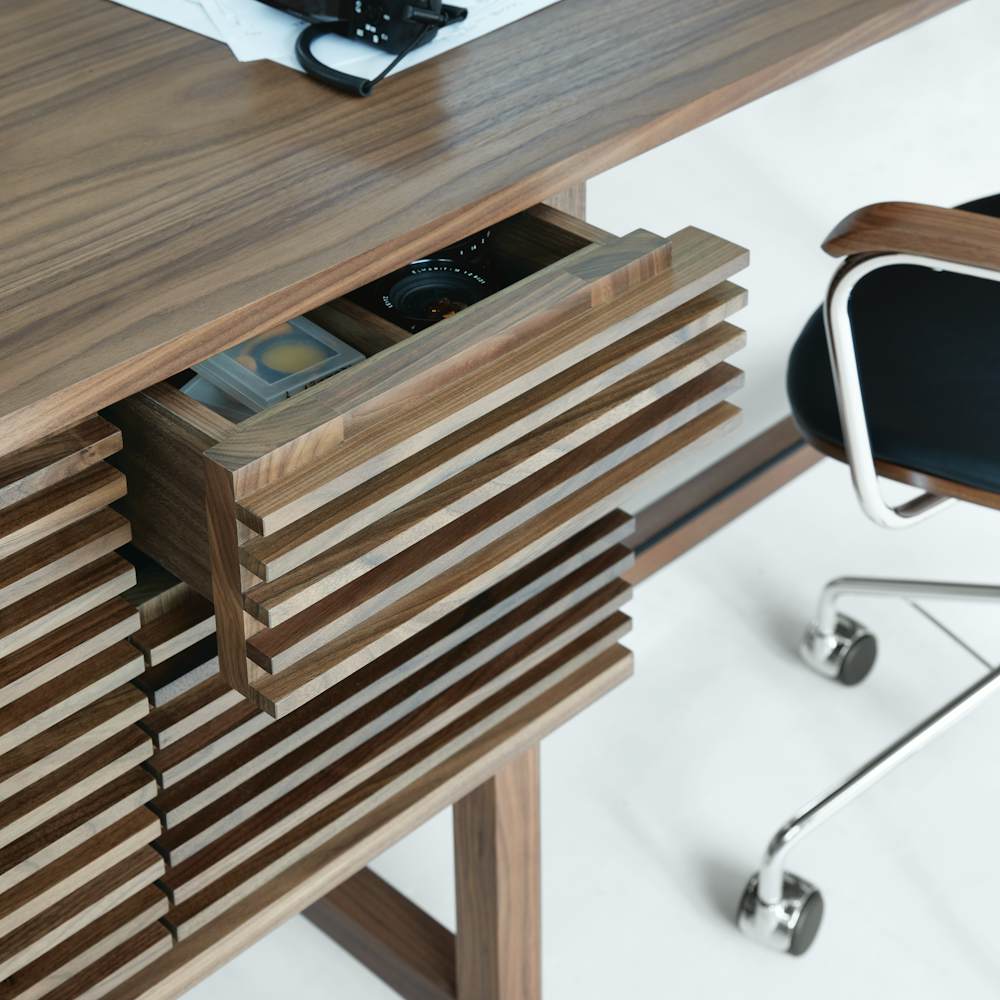
Storage desk
A storage desk is a no-brainer. Equipped with built-in storage, this type may feature a simple design with a single center drawer or a more complex organizational system with a combination of cubbies and drawers. An office desk with storage is ideal for smaller spaces that can’t accommodate a stand-alone file cabinet or hutch.
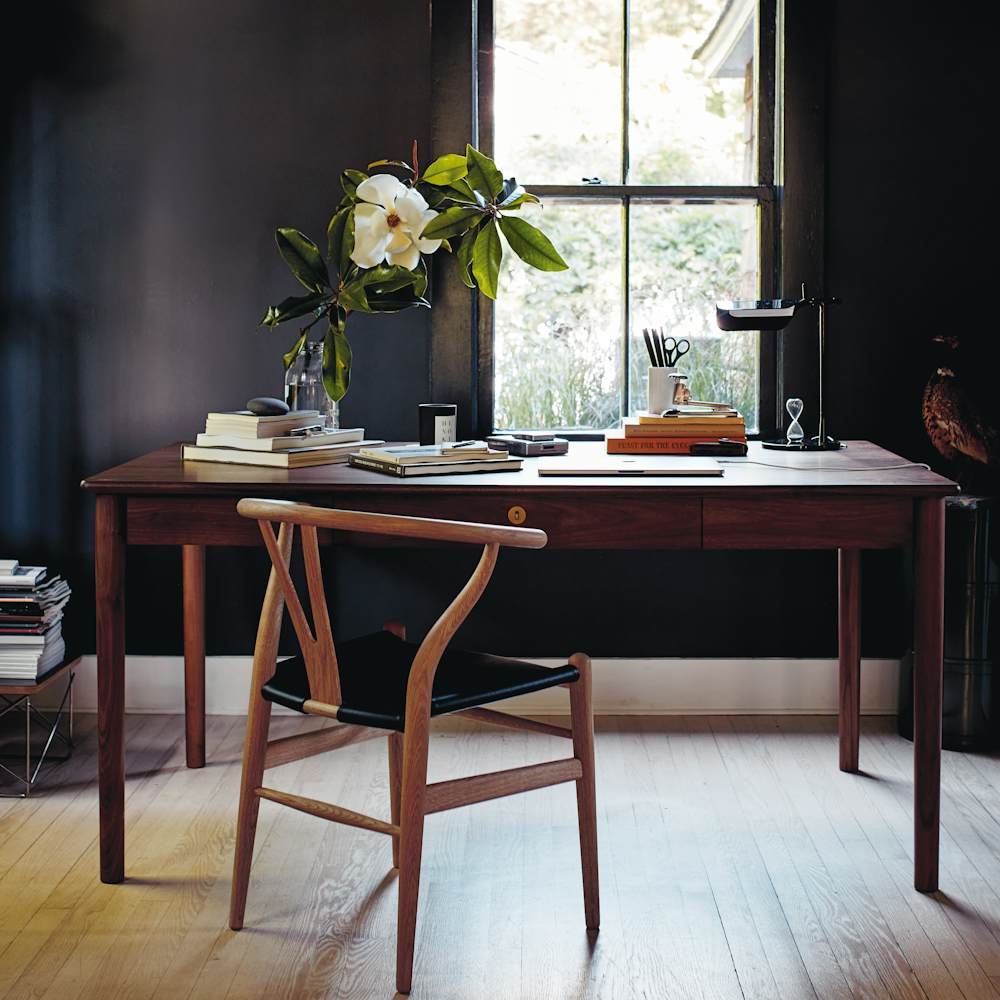
Table desk
Also referred to as a writing desk, a table desk is truly versatile, often featuring clean lines, ample surface space, and slender legs. If you don’t have a separate room or dedicated home office, this type of desk can pull double duty as a dining table. In the same vein, it works well as a desk for two – with one person seated on each side or end.
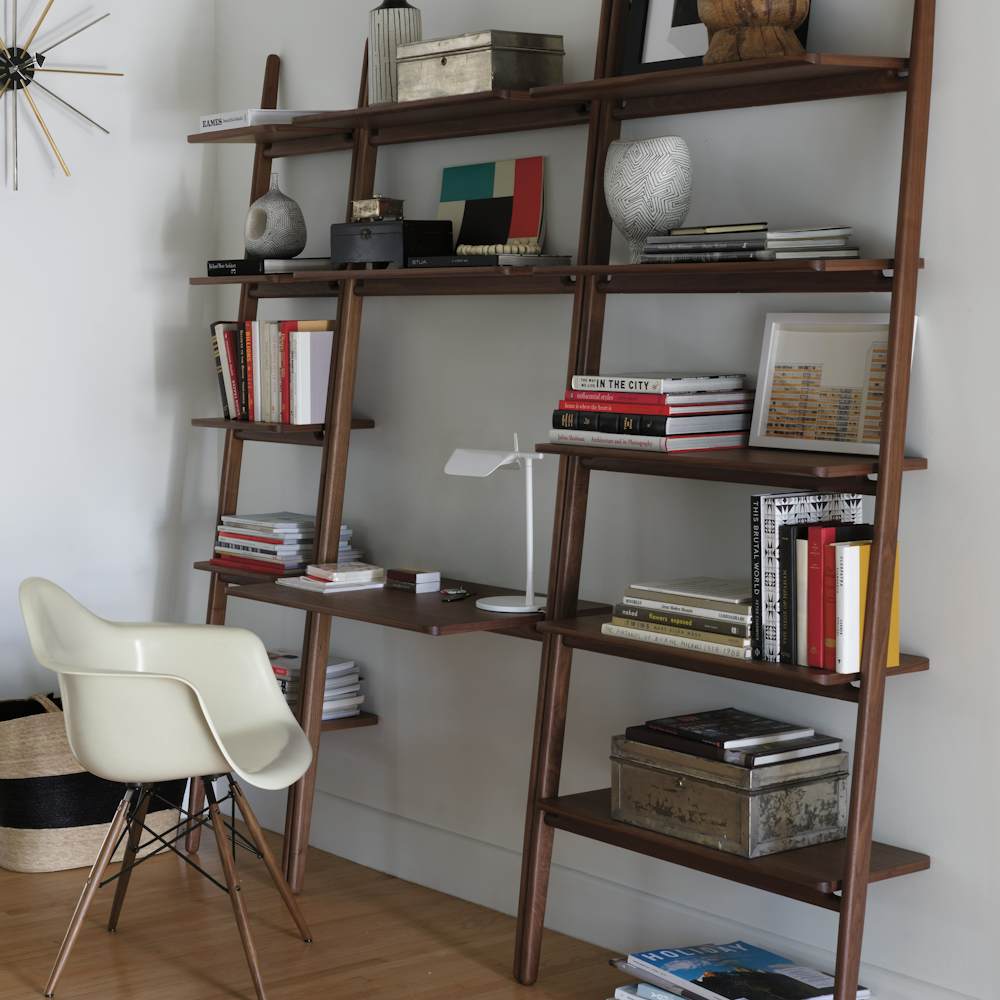
Ladder desk
A space-savvy solution, this type is a small home office desk that makes use of vertical space. It takes after a ladder in form, but its functions are many. It often features shelving above the work surface for added storage. Although it’s not ideal for a monitor or large laptop due to its smaller surface area, it’s an ideal choice for a petite home office or living room corner.
How to choose the height of your desk
To ensure that you’re selecting a piece that’s right for you, there are a few office desk size guidelines to follow. Standard desk height is approximately 28"–30", which works well for most people who are 5'8"–5'10". If your height falls outside of that range, consider an ergonomic sit-to-stand desk, which usually adjusts from 27"–46" high. This will allow you to customize the height of your work surface.
It’s also important to find an ergonomic task chair that ensures comfort and allows for ample legroom beneath the desk. Choose a chair that has some (if not all) of the following features:
- Adjustable height mechanism to customize the seat height.
- Lumbar support to help prevent lower back pain.
- Tilt control to adjust the seat’s backrest.
- Armrests to relieve shoulders.
- Headrest to help minimize neck tension.
- Swivel base to promote ease of movement.
A couple of other measurements to keep in mind include monitor height and keyboard placement. Your monitor should be positioned within 20"–30" of your face, and your eyes should be level with the upper half of the monitor. Your keyboard should be level with your elbows when your arms are bent at a 90-degree angle.
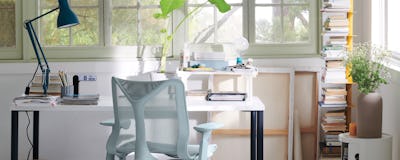
How to arrange your home office desk
Once you’ve determined the size and type of desk that’s best for your office, the next step is to arrange your workspace. Keep in mind that you should leave approximately three feet of space on one side of the desk to pull out a chair and sit down.
If your home office has a window, position the desk so as to minimize glare on your computer monitor or laptop screen. Think about where outlets are placed, too. If you can, situate the desk near a wall outlet to avoid running an extension cord. Cord management – a feature of modern home office desk design – refers to integrated outlets that facilitate ease of charging and powering. Consider a desk with this feature to minimize cord clutter.
Finally, remember that not every desk is fully finished on all sides, meaning some have an unfinished back that should be placed against a wall. If you want to float your desk, choose a well-designed piece that showcases a 360-degree finish.
How to choose materials and accessories for your desk
Home office desk colors and materials vary – from powder-coated steel and glass to laminate and solid wood. Choose a material that plays well with your home’s interiors, either by complementing existing furnishings or by providing refreshing visual contrast.
Think about durability, too. Steel and glass are easy to clean but are also prone to scratching. Laminate and solid wood boast durability, but any beverage can leave a ring on these surfaces if you’re not careful to use a coaster.
Modern office desk accessories are key to keeping the surface clean and organized, especially if your desk doesn’t feature built-in storage. Wondering how to organize your desk? Here are a few tips:
- Use staggered letter trays to organize projects and mail.
- In the absence of drawers, opt for a toolbox or lidded container to house pens, paper clips, and other small office supplies.
- Add a bag hook to keep your tote or briefcase off the floor.
- For more comfort while you work, consider a chair pad for your seat and even a foot pillow.
- Elevate your laptop with a media stand so the screen is at eye level.
Takeaway tips
A desk is the most critical part of a home office setup. At once, it should be an element of design and a pragmatic piece that fosters productivity. Moreover, a well-chosen desk will set you on the path to a well-designed office. Remember these tips as you delve into your search:
- Measure your space, then choose a desk by size and type.
- Arrange your desk so as to create a functional workspace that minimizes screen glare and cord clutter.
- Keep optimal desk height in mind, making adjustments as necessary to accommodate your height and create an ergonomic environment.
- Opt for a desk material that is equally durable and stylish – and choose accessories that will keep your desk’s surface organized.

